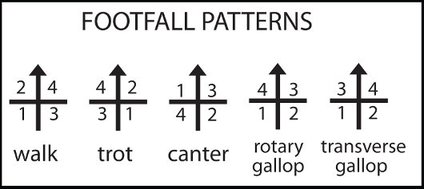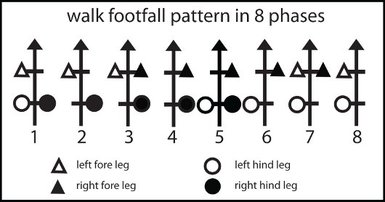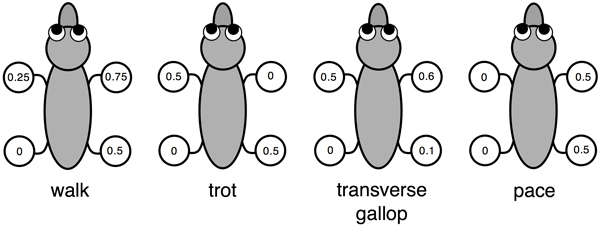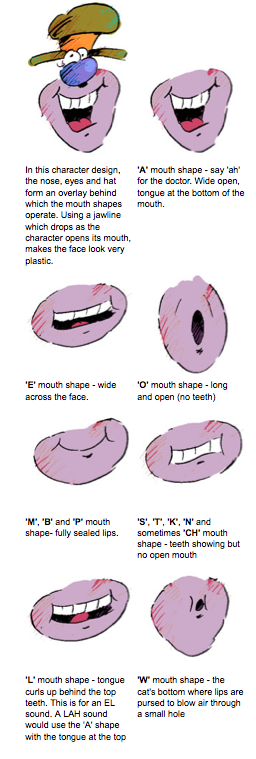When comparing two of my reference videos, I found that a smaller bird had a faster flight cycle and so wanted to find out if this is common and why.
http://wiki.answers.com/Q/Why_do_small_birds_flap_their_wings_faster_than_large_birds_in_flight
It is a combination of factors, though I'm not sure if only one is more important than another...however, they all contribute into the same end product and one common factor: smaller birds are birds of prey.
1) Wing span: smaller the bird, shorter the wing span from wing tip to wing tip. This makes it necessary to flap more frequently to keep the lift required to compensate for their weight.
2) Environment: small birds need to hide from predators, therefore they live in mostly forested or grassy places to find safety in the form of shelter. This also makes it necessary for them to be able to make sudden maneuvers and sharp turns - which a larger wingspan would hinder.
3) Escape: needing to flee suddenly requires one to be able to get lift with little momentum...if they were larger (heavier) and had a greater wing span this would add too much bulk and slow them down.
http://labspace.open.ac.uk/file.php/5850/!via/oucontent/course/338/s324_4_bk4_ch5.pdf
This is a link to a PDF document named Principles of Flight which has a lot of detailed information on bird flight.
LOCOMOTION
A healthy tortoise walks with its plastron clear of the ground, and the strength of its legs is legendary. Boulders or bricks can be heaved out of the way of a determined escapee, and it can squeeze into spaces from which extrication is difficult. The shoulder blades and pelvis are actually fused to the spine and shell, giving them tremendous leverage. The claws are also very useful for escaping, as owners with Hermann’s and especially Horsfield’s tortoises will know. Some can climb bushes or wire netting with ease, and even those finding it difficult may have the tenacity to succeed. Speed is dependent on temperature: a very warm tortoise can scuttle around almost at a run, particularly during a pursuit.
A sick tortoise may not have the strength to raise its body off the ground, and if it becomes very debilitated it may never recover the ability to do so. A weak tortoise may even appear to be walking backwards, but this is usually just an inability to get a grip, so you can help by experimenting with different surfaces. You can also help a weak tortoise by manipulating its joints, or by placing it on a brick when it is nice and warm so it will exercise itself in its struggle to get down. If a tortoise is just regaining its appetite after illness, put its food where it has to walk a little way to find it, rather than right under its nose.
Walking in circles can have several possible causes. For example, exposure to frost during hibernation may cause total or partial blindness, in which case the tortoise may slowly recover; or it may have suffered irreversible brain damage. Circling can also be caused by toxaemia, such as in severe liver damage from obesity, and occasionally by an abscess or tumour on the brain.
Even when hibernating, a normal tortoise should have good muscle tone, i.e. the legs should not be flaccid when you try to withdraw them. Hind limb weakness can occasionally be caused by direct injury to the limb, such as a bite or rubbing of the shell on the leg, but if both limbs are affected it may need a radiograph to pin-point the problem. This is particularly important in females where egg-binding can cause pressure in the abdomen affecting the nerve supply to the legs. The condition can also be caused by a compression injury of the carapace.
Swelling of the joints or feet can be caused by fractures, septic arthritis or occasionally gout. An X-ray is essential to determine the cause and get the correct treatment. Leg fractures can be immobilised and should heal in about 3 months. More serious injuries, or infections that have eroded the bone, may result in amputation, and there have been many ingenious devices to enable a tortoise to retain its mobility with only three legs.
http://www.britishcheloniagroup.org.uk/caresheets/know
A gait is a pattern of leg movements, and five of them have just been described:
walk, trot, gallop, canter, pace. Strictly speaking, the gallop of the horse is
a transverse gallop. There is another kind, the rotary gallop,
in which the legs at the front hit the ground in the opposite order to those at
the back. This is how cheetahs move when they are chasing prey. Gait analysis
applies to all animals with legs, including insects, with six; spiders, with
eight; and humans, with two. It seeks to understand the general principles of
legged locomotion in nature. Those principles also apply to creatures that use
wings, or fins, or wriggle—like snakes. Even snails have their own
characteristic gaits. each leg hits the ground one quarter of the gait cycle after the previous
leg
This is a good website explaining the walk cycle of a dog, especially commenting on the shift in the centre of gravity which is very useful to consider and analyse in my own videos.  "Jake walks with a 4-time gait, LF (left-front), RR (right-rear), RF (right-front), LR (left-rear), then repeat. Presumably, most dogs prefer to start the walk with a front leg."
"Notice that balance and support are maintained by the LR+RF "diagonal" while the LF and RR legs are suspended [positions 1, 2], and by the opposite diagonal for the other 2 legs [positions 5, 6]. At the start of each step [positions 1, 5], the legs of the support diagonal are vertical, and the COG (center of gravity) of the dog is in the middle of the diagonal. Then the COG shifts forward as the stepping leg is extended [positions 2, 3, 6, 7], giving forward momentum to the body. "
 "...during initiation of the succeeding steps [positions 4, 8], the front leg
of the new step lifts slightly before the rear leg of the previous step touches
down. This prevents the feet on the same side from banging into each other
during the transition between diagonals, since for a normal stride, the rear pad
comes down near the front pad mark. "
 This is an image from the website above which helps to understand what order the feet touch the ground in different movement cycles. This will help a lot when thinking about creating my own quadruped walk cycle.
 Here is a similar diagram that shows when each foot is off of the ground. By looking at the diagram, you can see that when a foot lifts, the one that lifted before hasn't get gone back on the ground. This means at times, there are only two legs on the ground.
Rhino House is a really good website for reference materials to use for animations. It has a huge range of videos on it which will greatly help with the walk cycles and bird flight. http://www.rhinohouse.com/
As part of the joint lip sync animation, there's a scene with a close-up of Wood-Wood's legs running. Therefore I need to create a run cycle and so did some research to find this image which will be very helpful to use.
English is not a phonetic language and part of the art of good lip-sync is the ability to interpret the sounds (phonetics) you are hearing rather than attempting to animate each letter of a word.
| |
Before going to the workshop in how to create the pushing action in Maya, I have looked at some YouTube videos to try and gain some reference material.
Here are some stills from the video which I could then use for the key frames when planning the sequence.
Here is another reference video, this time of a man pushing against a wall. This would be a good activity for me to do and film to gain a much better understanding of the action.
|









